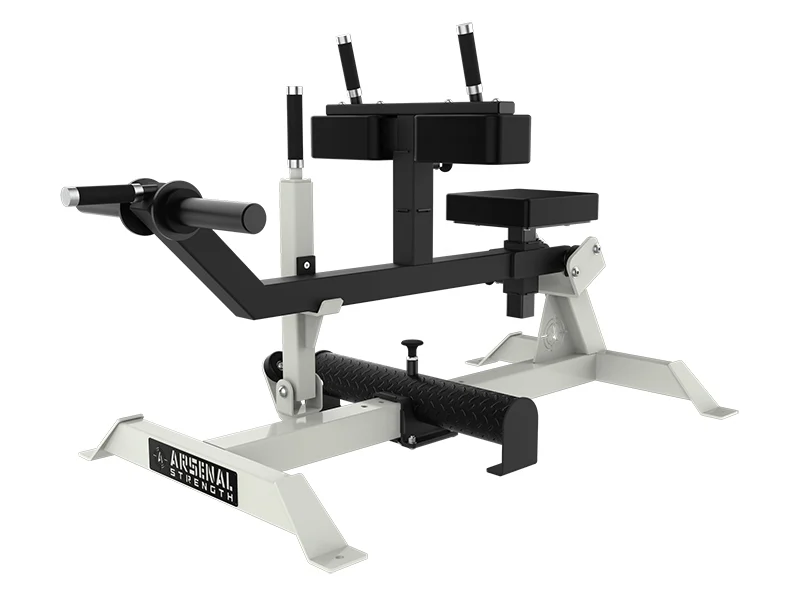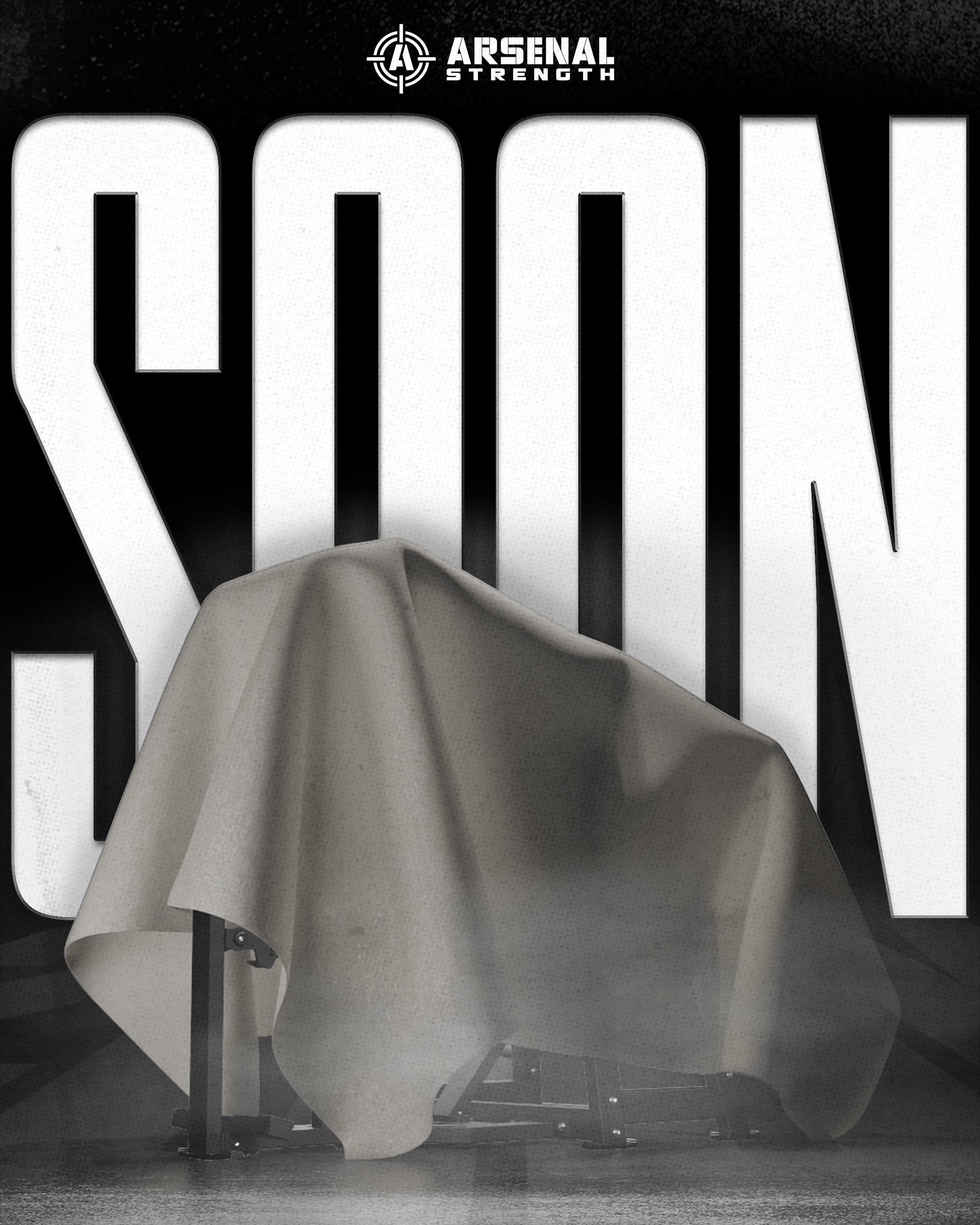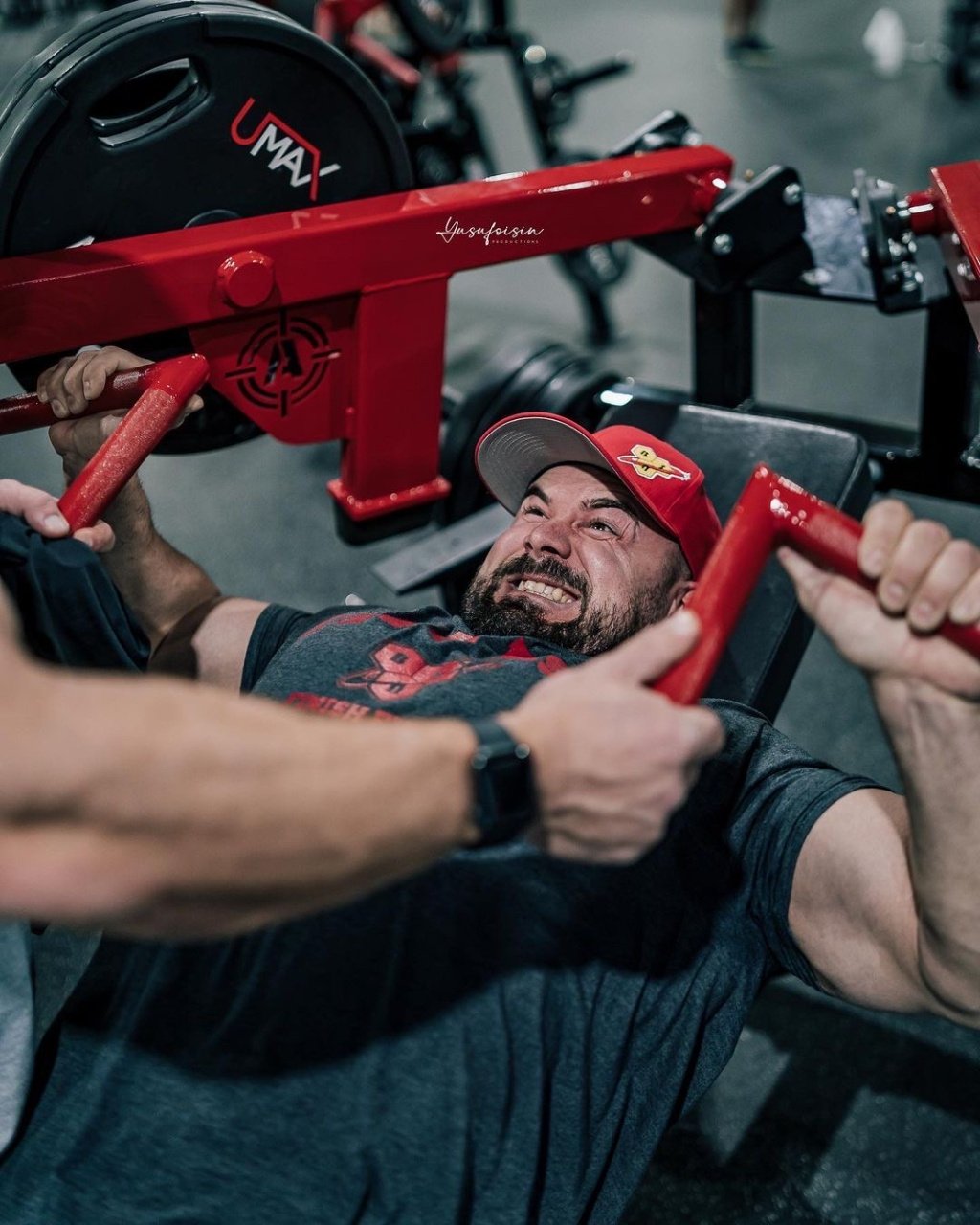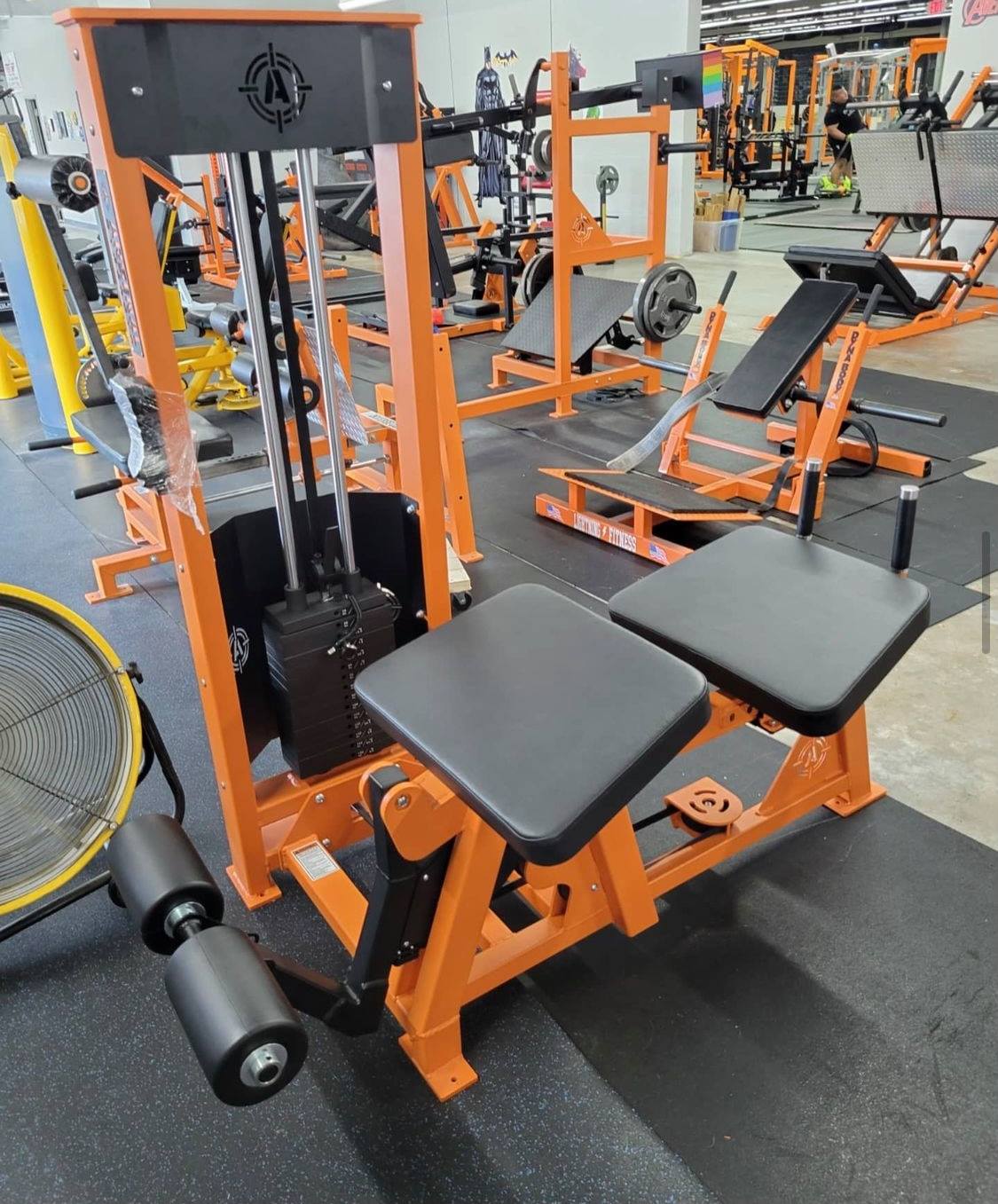Master the Seated Calf Raise
TECHNIQUES AND BENEFITS FOR STRONGER LEGS
Struggling to bolster your calf muscles? Delve into the seated calf raise, a quintessential exercise to amplify lower leg strength and stability. In this comprehensive guide, we'll dissect the proper techniques, delve into its myriad benefits, and explore various variations to maximize your calf workout potential.
- Seated calf raises uniquely target the soleus muscle, imperative for endurance and stability. To achieve a well-rounded calf development, incorporating both seated and standing variations is essential.
- Proper form is paramount, encompassing correct foot placement, executing a full range of motion, and maintaining a controlled tempo. These elements ensure optimal muscle engagement during seated calf raises, facilitating efficient progress.
- A wide array of equipment, including dumbbells, barbells, seated calf raise machines, and resistance bands, can be utilized to provide adjustable resistance. This adaptability is crucial for progressive training and fostering muscle growth over time.
Understanding the Seated Calf Raise
The seated calf raise stands out as a cornerstone in calf muscle exercises. This targeted exercise zeroes in on the calf muscles, primarily the often-overlooked soleus, nestled beneath the prominent gastrocnemius muscle. The soleus plays a pivotal role in numerous lower body movements, necessitating focused attention during training to optimize muscle growth and functionality.
Exercises such as the seated calf raise serve as catalysts, contributing to injury prevention, enhancing circulation, and improving performance in activities requiring lower body mobility. Additionally, calf muscles, particularly the endurance-centric soleus, predominantly consist of slow-twitch fibers. This physiological composition presents a unique challenge, demanding specific strategies and dedicated training to incite growth.
The Importance of Robustly Strong Calves
Our lower body’s unsung heroes, the gastrocnemius and soleus, are the two muscles located in our lower legs, known as the primary calf muscles. They play a crucial role in walking, maintaining posture, and supporting movements of the hip and lumbar area. In sports, they contribute significantly to the pace and stride length in walking and running, thus having a profound impact on performance.
In addition, the gastrocnemius muscle plays a vital role in:
- stabilizing and extending the knee during activities such as running or jumping
- providing ankle stability through the Achilles tendon
- influencing overall lower limb function through myofascial connections to the knee, hip, and lumbar area
The calves also play an essential role in injury prevention.
Seated vs. Standing Calf Raises
Seated calf raises and standing calf raises are not just two sides of the same coin. They target different muscles within the calf complex. Seated calf raises primarily target the soleus muscle, which aids in walking and postural support, while standing calf raises focus on the gastrocnemius muscle, necessary for explosive movements such as running and jumping.
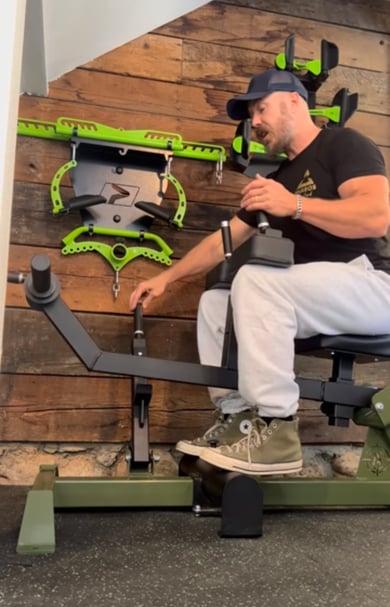
While seated calf raises enhance muscular endurance in the soleus, standing calf raises bolster the strength required for dynamic, explosive activities that engage the gastrocnemius. Therefore, for comprehensive calf development, it’s beneficial to incorporate both seated and standing calf raises in an exercise routine, ensuring both the gastrocnemius and soleus muscles are effectively trained.
Proper Form for Seated Calf Raises
The effectiveness of any exercise, including the seated calf raise, hinges on executing it with proper form. The starting position involves sitting down and positioning the balls of your feet on the platform with your feet hip-width apart. The thigh pad should firmly press against your lower thighs, just above the knees.
The exercise is performed by elevating your heels, pushing through the balls of your feet until they reach maximum height, pausing briefly at the top of the movement, then lowering your heels back down as far as possible to stretch the calf muscles. To maximize muscle engagement, maintain a controlled tempo, taking 2 seconds to lower, a 1-second pause at the top, 2 seconds to lift, and a 2-second stretch at the bottom.
Body Alignment
The effectiveness of seated calf raises is heavily influenced by body alignment during the exercise. Your feet should be positioned hip-width apart to maintain correct body alignment. Keeping the feet pulled back, i.e., heels not directly beneath the knees, is crucial for effective calf muscle targeting.
Moreover, when performing seated calf raises, remember to:
- Keep your knees aligned with your toes throughout the exercise to ensure proper body alignment.
- Sit up tall in the chair.
- Position your heels behind your knees.
Range of Motion
For optimal muscle engagement and development, it’s crucial to use a full range of motion during seated calf raises. This requires movement from a complete calf stretch to full plantar flexion, which activates the calf muscles through their entire length.
Maintaining slow and controlled movements during seated calf raises helps to maximize muscle engagement and prevent momentum from reducing the exercise’s effectiveness. Some tips for performing seated calf raises effectively include:
- Focus on a slow and controlled movement throughout the exercise
- Avoid using momentum to lift the weight
- Hold the contraction at the top of the movement for a brief moment to emphasize the muscle contraction
- Gradually increase the weight as you get stronger to continue challenging your muscles and promoting muscle growth.
Equipment Options for Seated Calf Raises
Regardless of whether you prefer working out at home or the gym, a variety of equipment options are available for seated calf raises. Some options include:
- Dumbbells: Place them on the thighs for added resistance.
- Barbell: Place it across the thighs for increased resistance.
- Seated calf raise machines: These machines specifically target the calf muscles and provide opportunities for muscle overload.
- Leg press machines: These machines can also be used for seated calf raises and provide a different angle of resistance.
All of these options are beneficial for seated calf raises and can help you strengthen and tone your calf muscles.
For those workout sessions at home, weighted objects such as books, water jugs, or weight plates serve as makeshift weights for performing seated calf raises when gym equipment is unavailable. Alternatively, resistance bands offer a versatile and portable alternative to weights, enabling seated calf raises to be performed almost anywhere with a different resistance curve.
Using Dumbbells
If you prefer working out with dumbbells, they can be effectively incorporated into your seated calf raise routine. Select a moderate dumbbell weight that allows for maintaining perfect form during the seated calf raises without bouncing. The dumbbells act as resistance during the exercise, forcing the calf muscles to stretch and adapt to the additional weight, which enhances the effectiveness of the exercise.
Dumbbells, often considered as light weights, can be held by the sides or positioned on the knees, ensuring they are secure and comfortable throughout the exercise. The beauty of using dumbbells is the ease of adjusting the weight as your strength progresses.
Machine-Assisted Seated Calf Raises
The seated calf raise machine provides a controlled environment that enables users to concentrate on muscle contractions without worrying about balance. This machine is versatile and suitable for individuals at all fitness levels, including beginners and those in injury rehabilitation.
To properly use the seated calf raise machine, follow these steps:
- Maintain a straight back.
- Position the balls of your feet securely on the designated platform.
- Adjust the weight load according to your preference.
- Perform the exercise with controlled movements.
- Repeat for the desired number of repetitions.
The seated calf raise machine, with its built-in back support, allows for easy adjustments of the weight load, making it a convenient option for progressive overload and sustained muscle growth.
Progressing Your Seated Calf Raise Workout
Progression is a fundamental aspect of continued growth and development in any exercise. Increasing the intensity of calf workouts is effective for stimulating muscle growth and overcoming developmental plateaus. Machine-based seated calf raises allow for muscle overload by adding more weight, which is crucial for continued muscle growth.
To intensify the seated calf raise, you can:
- Increase the weight
- Elevate the feet
- Change the tempo
- Incorporate pauses
- Use slower descent
- Add more sets and repetitions
However, remember that a gradual increase in workout difficulty ensures safe and sustainable muscle development as movements slow and you slowly lift weights, then slowly lower them back down.
Adding Resistance
To advance in your seated calf raise workouts, adding resistance can prove effective. Training calves with both high reps and heavy weights can stimulate different types of muscle fibers, contributing to overall calf development.
Resistance bands can be an effective alternative to weights for adding resistance to seated calf raises. Here’s how to use them:
- Position the band around your feet.
- Either hold the band with your hands or attach it to a stable object.
- Perform the calf raise while maintaining tension on the band.
Varying levels of resistance bands can be used to progressively increase the difficulty of seated calf raises as your strength improves over time.
Variations and Modifications
Variations and modifications can bring new challenges to your seated calf raise workouts, keeping them interesting and effective. For instance, pointing toes in or out during seated calf raises can target different muscles in the calf, specifically engaging either the soleus or gastrocnemius more effectively.
Banded seated calf raises and using dumbbells or a barbell placed on the lower thighs provide variations that target the soleus when knees are at approximately 90 degrees. You could also perform calf raises on a leg press machine, which activates the same calf muscles as traditional seated calf raises. By incorporating both bent-knee and straight-leg calf raises and alternating foot positions, you can engage all muscles in the calf complex for optimal calf development.
How to Avoid common mistakes
Being aware of common mistakes in seated calf raises is as important as knowing the correct technique for effective muscle engagement and growth. One of these is choosing the correct weight. Too heavy a weight can prevent full calf contraction, while too light a weight can fail to provide an adequate stretch. Aim for a weight that allows for 8-15 controlled reps.
Another common mistake is to rush the movement instead of performing calf raises slowly and with control, pausing at the bottom and top of each rep. Full range of motion is also key, including a 1-2 second squeeze at the top for muscle growth and a deep stretch at the bottom to maximize calf raise benefits.
Some tips for performing the exercise correctly are:
- Avoid using momentum, such as bouncing at the bottom of the movement
- Resist the urge to pull on the machine handles, which can lead to cheating the exercise
- Always focus on the mind-muscle connection, thinking of pushing the toes down into the ground rather than lifting the weight with the hips or knees.
Incorporating Seated Calf Raises into Your Fitness Routine
Given the myriad benefits of seated calf raises, it’s a wise strategy to include them in your fitness routine. They can be performed two to three times per week to adequately stimulate calf muscle growth without leading to overtraining, while ensuring rest days are factored in for recovery.
Incorporating exercises such as:
- Squat hold calf raises
- Jump rope
- Ankle hops
- Hill sprints
- Standing calf raises
- Donkey calf raises
can bring variety to your calf workouts, target different muscle angles, and prevent plateaus while enhancing lower body strength.
You can also integrate seated calf raises into lower body workouts by pairing them with other leg exercises in a superset, or adding them as a finisher exercise to maximize calf muscle engagement during the workout session.
Throughout this blog post, we have explored the realm of seated calf raises, from understanding the anatomy of calf muscles and the importance of their strength, to the correct form and techniques of performing the exercise. In addition, we’ve delved into the equipment options, how to gradually progress in the workout, and the common mistakes to avoid. Incorporating seated calf raises into your fitness routine can significantly improve lower body strength, stability, and performance. So, get ready to step up your fitness game with the power of seated calf raises!
Frequently Asked Questions About Mastering Seated Calf Raises
Is the seated calf raise effective?
Yes, the seated calf raise is effective for stimulating muscle growth and strength development, especially in the soleus muscle due to its higher load capacity.
Can you do seated calf raises at home?
Yes, you can do seated calf raises at home by following a simple technique while sitting in a chair. Just make sure your feet are hip-width apart and your heels are lifted off the floor while coming up on your toes.
Why are seated calf raises important?
Seated calf raises are important because they target the soleus muscle, which is crucial for maintaining posture, supporting movements, and preventing injuries. They also contribute to improved sports performance.
What is the difference between seated and standing calf raises?
The main difference between seated and standing calf raises is the muscles they target: seated calf raises focus on the soleus, while standing calf raises target the gastrocnemius. Both exercises are important for overall calf development.
How often should I do seated calf raises?
You should do seated calf raises two to three times per week, allowing for rest days to promote muscle recovery. This frequency helps build strength and avoid overtraining.
Additional Resources:
Arsenal Strength Seated Calf Raise In Action:
Bilateral Leg Press: https://www.youtube.com/watch?v=0FOAfwG8lCI
Pendulum Squat Machine: https://www.youtube.com/watch?v=jnWgrCYSVLM
Belt Squat Machine: https://www.youtube.com/watch?v=7l1kU5j6Shk

